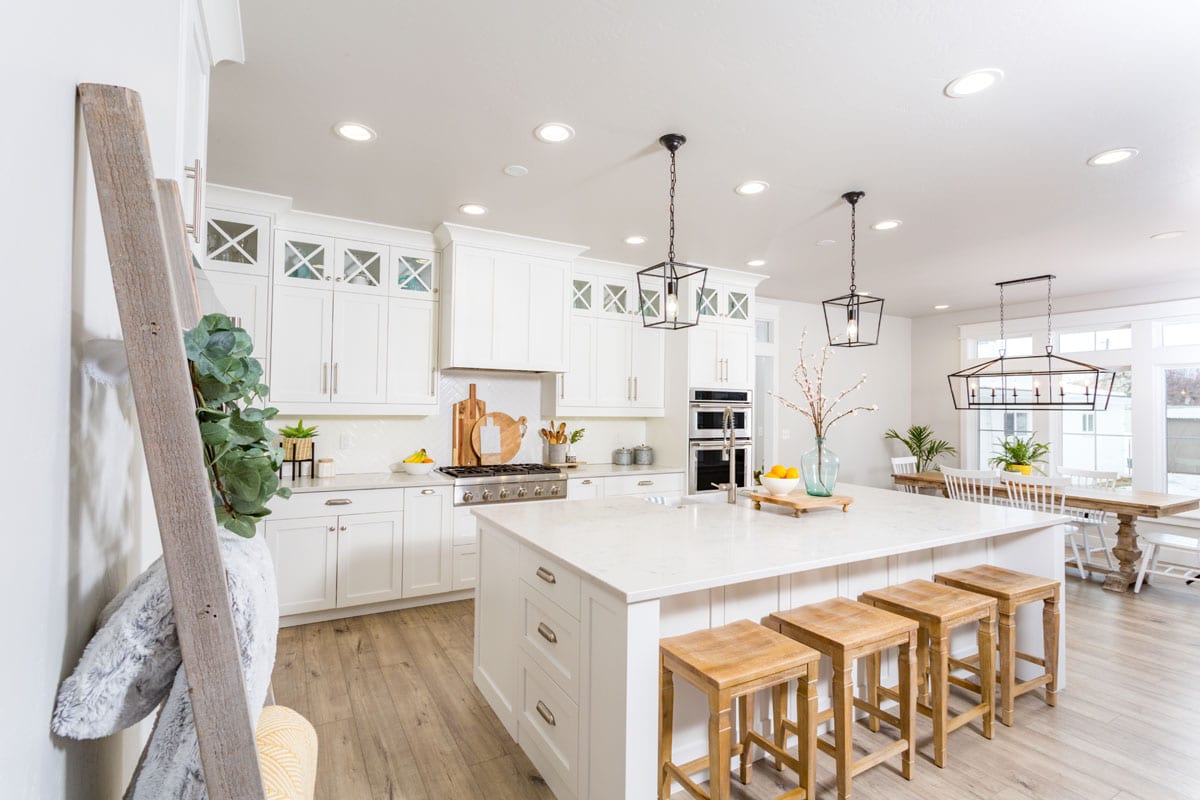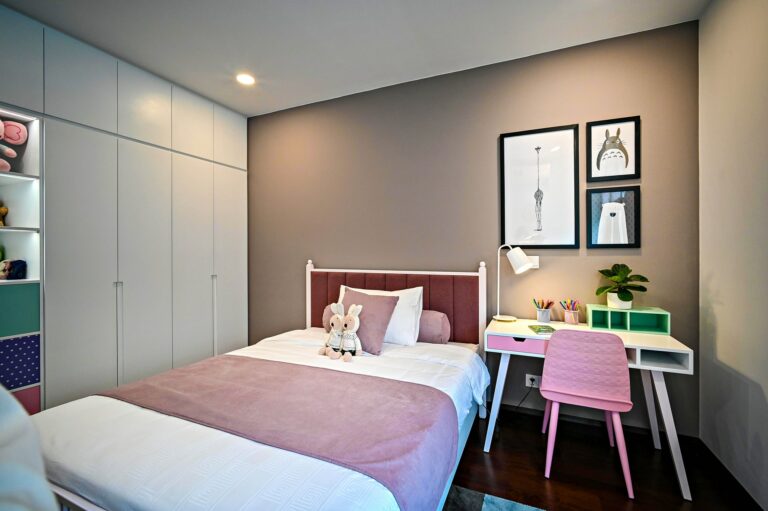As we move through 2025, home renovation in the UK is more important than ever. New building rules, tougher energy standards, and a push for eco-friendly materials are changing the way homeowners upgrade their spaces.
If you’re thinking about renovating, now is the time to plan. Whether your goal is to make your home more comfortable, raise its value, or meet environmental goals, preparation is key.
This guide is built specifically for UK homeowners. It focuses on bathroom renovations, one of the most cost-effective upgrades you can make. It also covers broader home improvements to help you get the most out of your investment.
You’ll learn how to:
- Set clear renovation goals
- Understand the latest UK regulations
- Plan your budget and timeline
- Choose smart, sustainable design options
In This Article
- Set Goals for Your Renovation
- Start with a Home Walkthrough
- Choose What Matters Most
- Why Bathrooms Are a Smart Upgrade
- Think Long-Term
- Assess Property Condition
- Understand UK Regulations and Planning Permission
- Building Regulations: The Basics
- Planning for Accessibility
- Planning Permission: Do You Need It?
- Who Can Help?
- Keep Your Records
- Set a Realistic Budget
- Choose the Right Professionals
- Plan Layout and Design
- Focus on Bathroom Design Trends in 2025
- Source Materials and Fixtures
- Manage the Renovation Timeline
- Week 1: Preparation and Demolition
- Week 2: First Fix – Plumbing and Electrical
- Week 3: Tiling and Waterproofing
- Week 4: Second Fix – Fittings and Fixtures
- Week 5: Final Fit and Clean-Up
- Common Delays to Avoid
- Prepare for the Disruption
- Inspect and Finalise the Work
Set Goals for Your Renovation
According to the bathroom experts at Ability Bathe Devon, having clear goals is the first and most important step in any home renovation. Whether you want to cut energy bills, boost resale value, make room for a growing family, or simply update a tired space, knowing your “why” will guide every decision you make.
Start with a Home Walkthrough
Begin by looking closely at how your home works today. Walk through each room and ask yourself:
- Does this space feel cramped or cluttered?
- Is there enough light?
- Are there storage problems?
- What looks or feels outdated?
Jot down what sticks out to you as this will help you focus on areas that really need improvement.
Choose What Matters Most
Once you have a list, decide what’s most important. You might dream of a modern, stylish home – but things like insulation, repairs, or layout changes might need to come first.
Rank your goals as:
Essential (must-haves, like fixing leaks or improving heating), and
Desirable (nice-to-haves, like new tiles or designer fixtures)
Why Bathrooms Are a Smart Upgrade
Bathrooms are a top choice for renovation. They’re used every day, and outdated bathrooms can hurt both comfort and home value. In fact, bathroom upgrades often bring some of the highest returns on investment.
Simple improvements like water-saving fixtures, better lighting, and improved ventilation can make your home feel more modern and efficient – and appeal to future buyers.
Think Long-Term
Your goals should match your future plans.
If you want to age in place, focus on easy-access features and simple upkeep.
If you plan to sell, go for universal appeal – neutral colours, tough materials, and energy-efficient upgrades.
Assess Property Condition
Before you begin any renovation, it’s crucial to understand the current condition of your home. Identifying problems early helps you avoid costly surprises and ensures your renovation starts on solid ground. Use the checklist below to assess key areas of your property:
| Area to Assess | What to Check | Why It Matters |
| Structural Integrity | Look for subsidence, cracks, damp, or sagging rooflines. Consider a full survey if the home is old or altered. | Prevents costly structural repairs later and ensures a safe base for renovation. |
| Plumbing and Electrical Systems | Inspect pipework and wiring for damage or outdated systems. Ensure plumbing and electrics meet modern safety standards. | Avoids plumbing leaks or electrical hazards that could delay or derail your project. |
| Insulation and Ventilation | Check insulation levels and ventilation systems, especially in bathrooms. Make sure extractor fans work properly. | Improves energy efficiency and prevents mold or moisture damage. |
| Hidden Issues | Be aware of potential issues like rotten floorboards or asbestos in ceilings. These may require specialist intervention. | Early detection saves time and helps avoid surprise costs mid-renovation. |
Understand UK Regulations and Planning Permission
If you’re planning a home renovation in the UK, it’s important to understand two key areas: building regulations and planning permission. They cover different things, but both help make sure your project is legal, safe, and long-lasting.
Building Regulations: The Basics
Building regulations are rules that ensure your home is built or renovated to a safe and modern standard. They apply to most structural work and cover things like fire safety, insulation, drainage, and energy use. Even small changes – like rewiring a bathroom or changing its layout – may need to follow these rules.
In bathrooms, regulations often focus on water efficiency and electrical safety.
For example, new toilets must usually use no more than six litres of water per flush. If you’re installing lights, extractor fans, or electric showers, the work must follow Part P of the Building Regulations, which is all about electrical safety in homes. Because bathrooms involve both water and electricity, only certified electricians should carry out this type of work.
Planning for Accessibility
If your renovation is meant to help an elderly family member or someone with a disability, you may want to include features like level-access showers, wider doorways, or grab rails. While these aren’t always legally required in private homes, they can be essential if your project is grant-funded or needs to meet specific planning conditions. These changes also help make the home more suitable for future needs.
Planning Permission: Do You Need It?
Planning permission is different from building regulations. It mainly deals with how your home looks from the outside and how much you change its size or layout. You don’t usually need it for interior renovations like updating a bathroom. But if you’re doing an extension or working on a listed building, you’ll likely need approval from your local council.
Some projects fall under “permitted development rights,” meaning you don’t need full planning permission. However, this depends on your type of property and where you live. Flats, for example, or homes in conservation areas, often face stricter limits.
Who Can Help?
If you’re not sure about the rules, speak to your local planning office. You can also work with a planning consultant or architect who knows local requirements. They can handle the paperwork and make sure you don’t miss anything important.
Keep Your Records
Always save any approvals or certificates you receive during the renovation. You may need them when selling your home or applying for insurance.
Set a Realistic Budget
Creating a realistic and detailed budget is one of the most critical steps in any renovation. Without careful financial planning, costs can escalate quickly, leading to delays, compromises, or unfinished work. Start by determining the total amount you’re willing and able to spend, then break this down by project element – such as design, labour, materials, fixtures, and professional fees.
Be sure to account for VAT, which is typically charged at 20% for most renovation services and materials unless specific exemptions apply. Include a contingency fund of at least 10–15% of the overall budget to cover unforeseen issues such as structural repairs, delays in delivery, or rising material costs. Don’t overlook hidden fees like skip hire, planning applications, waste disposal, or increased utility bills during the renovation period.
As of 2025, material and labour costs in the UK remain high due to ongoing demand and inflation in the construction sector. Tradespeople – especially skilled bathroom installers, electricians, and plumbers – are charging premium rates, particularly in urban areas. Planning ahead and securing quotes early can help lock in better prices and ensure availability.
When budgeting for a bathroom renovation, consider where it makes sense to invest and where you can save. Items like waterproofing systems, quality brassware, and professional installation are worth the expense due to their impact on durability and performance. Conversely, savings can be made on decorative finishes – such as tiles and accessories – by shopping around or choosing mid-range options that still offer good visual appeal.
Prefabricated bathroom furniture and off-the-shelf fittings can offer excellent value compared to bespoke joinery or imported pieces. However, ensure that any cost-saving choices do not compromise functionality or compliance with building regulations, especially in wet areas.
Use a spreadsheet or renovation budget planner to track all costs in detail. Update it regularly as quotes come in or changes occur. This transparency helps you stay in control and make informed trade-offs if the budget tightens.
Choose the Right Professionals
Hiring the right professionals is essential to the success of any renovation project. Whether you’re planning a complete remodel or a focused bathroom upgrade, working with skilled, reliable tradespeople ensures that the job is done safely, legally, and to a high standard. Inadequate workmanship can lead to expensive repairs, compliance issues, and delays, so the selection process deserves careful attention.
Start by identifying the key professionals you’ll need. For large projects, this might include an architect or designer, structural engineer, builder, plumber, electrician, and bathroom installer. If your renovation involves layout changes, structural work, or planning permission, engaging an architect or architectural technologist early in the process can provide design clarity and help navigate regulatory requirements.
When choosing tradespeople, always check credentials. Ensure that individuals are qualified and registered with the appropriate bodies. For electricians, look for certification under a Competent Person Scheme such as NICEIC or NAPIT. Gas engineers must be Gas Safe registered. Bathroom installers should demonstrate experience and knowledge of current UK Building Regulations, particularly around waterproofing, drainage, and electrical safety (Part P).
Reputable platforms such as TrustMark, the Federation of Master Builders (FMB), and Checkatrade can be helpful for finding vetted professionals. These services provide customer reviews, qualifications, insurance details, and trade memberships, offering peace of mind that the tradespeople meet national standards.
Always request references or examples of recent work. Speaking to previous clients and viewing completed projects helps confirm reliability and quality. Written quotes should be detailed and transparent, outlining exactly what is included. Be wary of unusually low estimates, which can indicate corner-cutting or hidden costs later on.
For bathroom-specific renovations, hiring a bathroom specialist is often the best route. These professionals are experienced in managing the unique demands of bathroom installation, including plumbing, tiling, ventilation, waterproofing, and fixture fitting. A specialist can often complete the work more efficiently and in full compliance with regulations, minimising the risk of future issues.
Good professionals are also good communicators. They will be clear about timelines, costs, and any potential complications, and they will work collaboratively with you to achieve your vision.
Plan Layout and Design
Effective layout and design are at the heart of every successful renovation. Whether updating a single bathroom or reconfiguring an entire floor, the goal is to create spaces that are functional, visually pleasing, and adaptable to your lifestyle. In 2025, with homes expected to meet higher standards of efficiency and versatility, thoughtful design plays an even more vital role.
Start with functionality. Think carefully about how you use each space on a daily basis and which aspects currently hinder comfort or efficiency. In bathrooms, for example, the placement of key elements such as the toilet, shower, and basin should prioritise ease of movement and accessibility.
Avoid blocking natural light or making corners feel cramped. Ideally, toilets should be positioned away from the door and not be the first thing visible upon entry. Showers and baths should have sufficient clearance, and basins should be paired with adequate storage.
Ventilation is another critical consideration. Bathrooms, in particular, require efficient extraction systems to prevent condensation and mold. Installing a quality extractor fan and ensuring good airflow protects both health and the longevity of finishes. Wherever possible, maximise natural ventilation with windows or skylights.
Flow within the room – and between rooms – is equally important. An open-plan design can create a sense of space, improve natural light distribution, and enhance flexibility. For example, integrating kitchen, dining, and living zones can make homes feel larger and more sociable. However, open-plan layouts must be well-balanced. Use partial walls, furniture positioning, or changes in flooring to subtly define areas and maintain privacy where needed.
For smaller homes or apartments, space-saving solutions can make a dramatic difference. In bathrooms, wall-mounted toilets and basins free up floor area and create a cleaner, more modern aesthetic. Recessed storage, such as built-in shelves or mirrored cabinets, offers practical storage without encroaching on usable space. Sliding doors, rather than swing doors, can also help in tight layouts.
When planning any renovation, think not just about your current needs but how those might evolve in the future. Future-proofing is increasingly relevant, particularly for homeowners looking to age in place or accommodate changing family dynamics. This could mean creating wider doorways, ensuring level access to showers, or installing reinforcement for grab rails, even if they’re not immediately needed. Consider how layouts might adapt to future technology or lifestyle shifts, such as remote work or multi-generational living.
Aesthetics should never be an afterthought. Choose materials and finishes that complement your home’s character while being durable and easy to maintain. In 2025, design trends lean toward minimalism, natural textures, and sustainable finishes – but timeless design remains the most enduring. Neutral palettes with textured surfaces, well-placed lighting, and clean lines create a calm and cohesive look across the home.
Lighting design is another crucial part of layout planning. Layered lighting – combining ambient, task, and accent lighting – ensures that each area functions well at all times of day. In bathrooms, task lighting near mirrors, soft ambient lighting for relaxation, and water-resistant LED fixtures in showers can all elevate the experience.
Finally, don’t underestimate the value of professional input. Interior designers or bathroom planners can offer layout suggestions you may not have considered, maximise awkward spaces, and ensure that the design aligns with building regulations and best practices.
Focus on Bathroom Design Trends in 2025
Bathroom design trends in 2025 are heavily influenced by advancements in technology, sustainability, and a growing desire for minimalist aesthetics. UK homeowners are seeking spaces that are not only functional but also stylish, energy-efficient, and future-proof.
Smart Bathroom Tech is leading the way, with innovations designed to enhance convenience and efficiency. From motion-sensor lighting and voice-activated taps to intelligent shower systems that adjust temperature and water flow based on personal preferences, smart features are becoming essential in modern bathrooms. Heated mirrors with anti-fog functionality and touchless faucets are also becoming standard, promoting hygiene and comfort.
Walk-In Wet Rooms continue to gain popularity, particularly in smaller spaces. These open, barrier-free designs create a luxurious, spacious feel and provide accessibility for people of all ages. Seamless glass screens and floor-to-ceiling tiles allow for a sleek, modern look that’s both practical and elegant.
Minimalist Aesthetics dominate bathroom interiors, with clean lines, neutral palettes, and clutter-free surfaces creating serene environments. Simple yet effective design elements like floating vanities, wall-mounted taps, and hidden storage help to reduce visual noise, making the space feel airy and open.
Sustainable Materials are increasingly a priority. Eco-conscious homeowners are opting for recycled, natural, and low-carbon materials like bamboo, reclaimed wood, and water-efficient fixtures. Recycled tiles and eco-friendly paints are common choices, and sustainable insulation is often used to enhance energy efficiency.
Lighting in 2025 bathrooms focuses on creating ambience as well as functionality. LED lighting, especially under-cabinet and mirror lights, offers a soft glow that enhances the clean, minimal design. Customisable lighting systems allow users to adjust brightness according to mood or activity, whether for relaxing baths or precise grooming.
Source Materials and Fixtures
Sourcing the right materials and fixtures is a pivotal part of any renovation project, particularly when creating a space as high-traffic and functional as a bathroom. Choosing quality materials ensures durability, safety, and style, but it’s equally important to find a balance between quality and budget. Here’s how to source the best options for your project while making informed decisions.
Start with eco-friendly materials, which are increasingly popular in bathroom renovations due to their sustainability and aesthetic appeal. Recycled tiles, low-VOC paints, and water-saving fixtures are excellent choices for environmentally-conscious homeowners. Suppliers offering materials like recycled glass tiles, bamboo, or cork flooring are ideal for green renovations. Many bathroom suites now feature water-saving toilets and taps, which comply with modern standards and contribute to reducing household water usage.
When considering bathroom suites, look for reputable brands that combine quality and value. UK suppliers such as B&Q, Wickes, Bathstore, and VictoriaPlum provide a wide range of options, from budget to premium, with customer reviews and warranty details available to help you make an informed choice. Online platforms like Amazon or specialist suppliers such as Tiles Direct and Tile Mountain offer a vast selection of styles and materials with the convenience of home delivery.
While shopping, be mindful of lead times. Bathroom materials, especially tiles and custom fixtures, can have extended waiting periods. Always check availability before committing to a design to avoid delays in your renovation schedule. Ordering materials well in advance will give you peace of mind and ensure that everything arrives on time.
When purchasing, look for warranties and product certifications. Many manufacturers provide warranties for their products, which are valuable for protecting your investment in case of defects. For example, bathroom suites and taps often come with 5-10 year guarantees. Product certifications, such as those from the Water Regulation Advisory Scheme (WRAS) or FSC-certified wood, indicate that the materials meet industry standards for safety, sustainability, and quality.
Balancing quality with budget can sometimes be a challenge, but smart shopping helps. Consider investing more in key features like your shower system or faucets, which have a higher impact on the space’s functionality, while opting for more affordable options on finishing materials like tiles or paint. Take advantage of sales, trade discounts, and online deals to secure better prices.
Finally, don’t underestimate the importance of consulting professional suppliers or showrooms. Visiting showrooms allows you to touch and feel materials, ensuring you’re happy with the quality before purchasing. Expert advice from showroom staff can also help you discover materials that meet both your aesthetic and practical requirements.
Manage the Renovation Timeline
Managing your renovation timeline effectively is crucial to keeping your project on track and avoiding unnecessary delays. Proper sequencing of tasks ensures a smooth flow of work, while anticipating potential issues allows for proactive problem-solving. Here’s a sample timeline for a typical UK bathroom renovation.
Week 1: Preparation and Demolition
The first week is dedicated to clearing the space and removing old fixtures. This includes demolition of existing tiles, removing the old suite (bath, shower, toilet, sink), and any plumbing or electrical work that needs to be altered. It’s important to have a clear plan for waste disposal and to ensure that contractors protect the rest of your home from dust and debris.
Week 2: First Fix – Plumbing and Electrical
Once the space is clear, the first fix begins. This includes plumbing work such as moving or installing pipes for the new fixtures, as well as electrical work like setting up lighting, power sockets, or heated towel rails. These tasks must be done before the walls are sealed up, as they need to be hidden behind tiles or walls. It’s essential that all work complies with UK building regulations, so make sure your contractors are properly certified.
Week 3: Tiling and Waterproofing
The next stage involves waterproofing and tiling the walls and floor. This is a critical step for bathroom renovations to prevent water damage and mould growth. Once waterproofing is applied, the tiling process begins. Allow sufficient time for the adhesive to set, especially if you’re using larger tiles or intricate designs.
Week 4: Second Fix – Fittings and Fixtures
During the second fix, the bathroom suite is installed, including the shower, bath, toilet, sink, and taps. This is also when lighting and mirrors are put up, and any additional features like towel rails or shelving are installed.
Week 5: Final Fit and Clean-Up
The final fit is when finishing touches are applied, such as sealing around fixtures, fitting any last accessories, and completing touch-up painting if necessary. The site should be thoroughly cleaned, and a final inspection should be conducted to ensure all work is up to standard.
Common Delays to Avoid
One of the most frequent causes of delays in renovations is material supply issues. Be sure to order your materials early, especially if they are custom-made or have long lead times. Confirm product availability before scheduling tasks that depend on specific items.
Another potential delay is contractor scheduling conflicts. Always secure your contractors well in advance, particularly during peak renovation seasons. Confirm all dates and have a clear communication plan to ensure the project stays on schedule
Prepare for the Disruption
Renovating a bathroom can be an exciting but disruptive process, especially when the work is extensive. Understanding and preparing for the inevitable disruptions can help reduce stress and make the experience more manageable.
The most significant disruption is likely to be the loss of access to your bathroom. Depending on the extent of the renovation, this could last anywhere from a few days to a few weeks. To minimise inconvenience, consider setting up temporary bathroom facilities. If possible, arrange for access to a guest bathroom, or, in more extreme cases, create a makeshift setup with portable toilets or a shower outside of the work area. Planning ahead will ensure you aren’t left without essential facilities during the renovation.
To protect your home from damage, cover floors and furniture. Contractors will typically take precautions, but it’s worth going the extra mile to safeguard floors and valuable furniture, particularly in areas near the work zone. Use heavy-duty dust sheets, plastic sheeting, or painter’s tape to shield surfaces. If the work extends into hallways or other rooms, consider using protective coverings to prevent dust and debris from spreading.
During renovations, maintaining a clean and safe site is crucial. Dust and debris are unavoidable, but keeping the site tidy will make the process smoother and safer. Ensure that contractors regularly clear up after themselves, and ask them to take precautions to avoid leaving tools or materials around the work area, especially if you have young children or pets.
Finally, communication with contractors is key. Set clear expectations from the outset, including working hours, access arrangements, and how you prefer updates. Regular check-ins help manage any changes to the schedule or unexpected complications. Proactive communication can alleviate stress and keep the project moving forward smoothly.
Inspect and Finalise the Work
Once the renovation work is complete, it’s essential to conduct a thorough final walk through to ensure everything is up to standard. This step allows you to address any issues before you sign off on the work, and it helps ensure that all aspects of the renovation meet your expectations and comply with UK regulations.
A snagging list is an important tool during this phase. It’s a detailed list of any minor defects, unfinished tasks, or areas that require correction. Items on the snagging list may include things like paint touch-ups, uneven tiles, or loose fixtures. Go through the entire bathroom and make a note of anything that needs attention.
In addition to the snagging list, ensure that the renovation complies with relevant building regulations. This includes ensuring that plumbing and electrical work are installed correctly and meet safety standards. If your renovation included structural changes, check that any required permits have been obtained and that the work is compliant.
Bathroom-Specific Inspections should focus on functionality and safety:
- Water pressure. Check that all taps, showers, and the toilet are functioning correctly, with adequate water pressure.
- Leak-free seals. Inspect all joints, especially around the shower, sink, and bathtub, to ensure there are no leaks.
- Proper ventilation. Ensure that extractor fans are working efficiently, and there is no excess moisture in the room, which could lead to mold growth.
Finally, request warranties for any new fixtures and fittings, and keep all documentation for future reference. This includes guarantees for bathroom suites, taps, and electrical installations. Having these records can be useful for future repairs or resale.
Conclusion
Thorough planning, smart design, and the right professionals are key to a successful renovation. With the right approach, even complex projects like bathroom upgrades can run smoothly. Embrace the transformation as an investment in comfort, efficiency, and property value, ensuring long-term benefits and enjoyment in your updated space.











